Wood vs. Charcoal Grilling: What's the Difference?
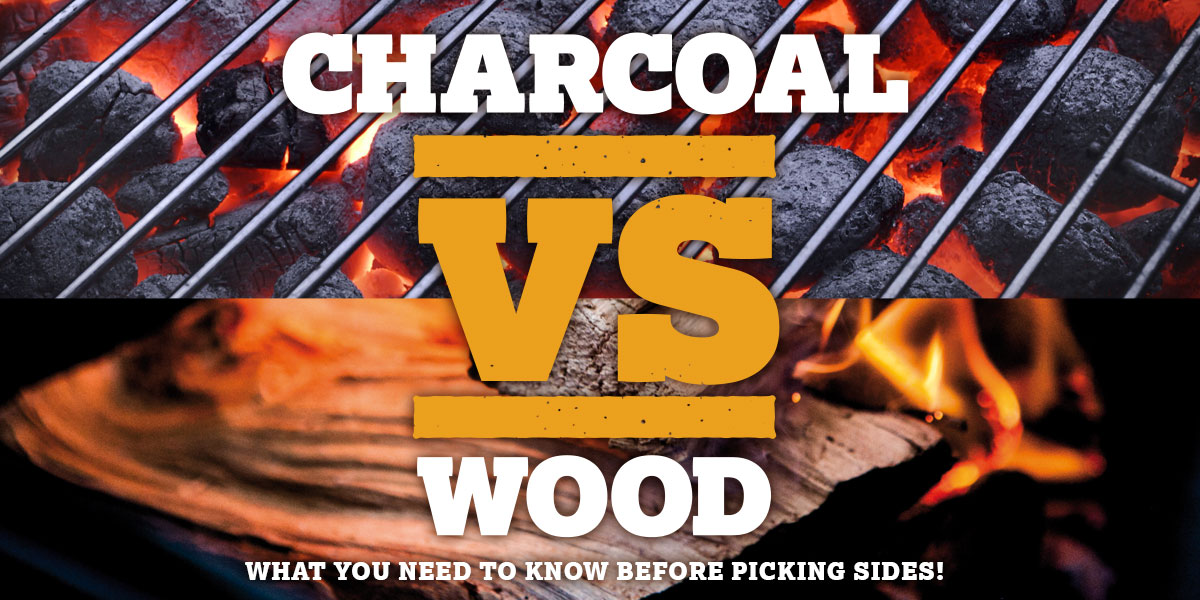
Barbecuing is popular where I live! When you go to the store to buy charcoal, though, you have several options. So, despite my preferences, I was curious about the distinctions between wood and charcoal.
So, I decided to put the debate to rest and do some research, and this is what I discovered.
All charcoal, whether wood or briquettes, is heated in the absence of oxygen, resulting in the formation of charcoal without burning. Natural hardwood or timber scraps are used to make char wood. Briquettes consisting of charcoal, coal, corn starch, sawdust, and sodium nitrate, on the other hand, are created from a combination of charcoal, coal, corn starch, sawdust, and sodium nitrate.
However, there’s a lot more to charcoal, BBQ, and grilling than that, and there are a lot of differing viewpoints.
So, let’s address a few more often asked questions about the differences between wood and charcoal.
What is the most significant distinction between charcoal and wood?
As I previously stated, there are a plethora of options available when purchasing charcoal.
Anything branded as charcoal is either wood pieces that have been heated without oxygen and transformed into carbon chunks or manufactured charcoal briquettes made in part from hardwood treated in the same way.
As I explained earlier, briquettes have additional fillers, such as maize starch to bind them and sodium nitrate to help them burn more efficiently. On the other hand, Briquettes will produce more ash in the grill than hardwood charcoal due to the additional fillers.
Although some charcoal wood is sourced from renewable resources, technically, all trees are renewable; thus, this may not matter much unless your brand specifies otherwise (i.e., for every tree we chop, we plant five new ones).
Most hardwood lump charcoal will also claim “all-natural,” but keep in mind that “all-natural” does not have a legal or “official” FDA definition, so it could not mean much.
Also, as previously said, search for hardwood charcoal that is not manufactured from wood wastes (if you can find it). Lumber scraps may contain nails or wood glue and metal or plastic scraps from the construction site; this is not what you want in your grill!
What are charcoal briquettes, and how do you use them?
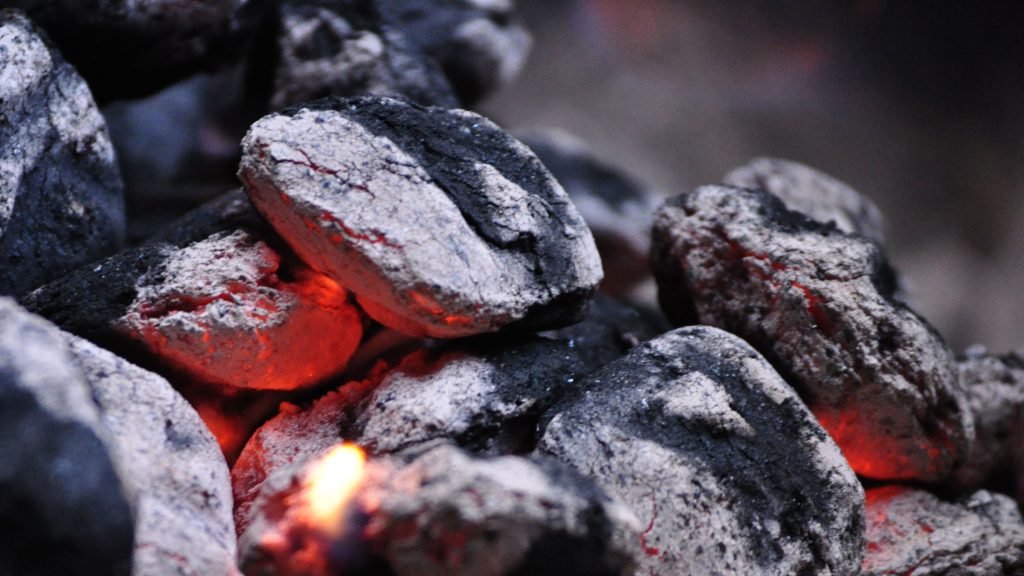
Charcoal briquettes were invented to get rid of sawdust and wood debris at the Ford Motor Company’s Detroit facilities, believe it or not. As a result, Henry Ford switched from paying to dispose of rubbish to selling it and profiting!
Technically, Ellsworth Zwoyer received the patent for charcoal briquettes in 1897. Still, Henry Ford, Thomas Edison, and EB Kingsford collaborated almost a century ago to get charcoal briquettes off the ground.
They produce the briquettes by heating wood scraps and sawdust in the absence of air to convert them to carbon. They then grind them before adding binders like maize starch or limestone and chemicals like sodium nitrate to boost burn and flavorings. Then they form a thick batter with the mixture and pour it into the molds, which they then dry.
Is hardwood charcoal preferable to briquettes?
Grillers will engage in a lot of discussions here. Those who prefer all-natural hardwood charcoal believe it has a cleaner flavor and creates more natural smoke. Some purists, however, argue that charcoal briquettes cook more evenly and reliably, resulting in superior results with less supervision.
In the end, both are made of the same material: carbonized wood that has been heated without the use of air.
Hardwood charcoal’s advantages and disadvantages:
- It burns hotter but in a less consistent manner.
- You may be given an option of wood type on occasion (which can change the flavor).
- There are usually no additives in it.
- It’s possible to make it out of scrap wood (which could have nails or glue).
The advantages and disadvantages of charcoal briquettes
- Burning consistently
- More ash after burning added chemicals and additives, as well as possible undesirable flavor effects
Is it possible to use wood instead of charcoal?
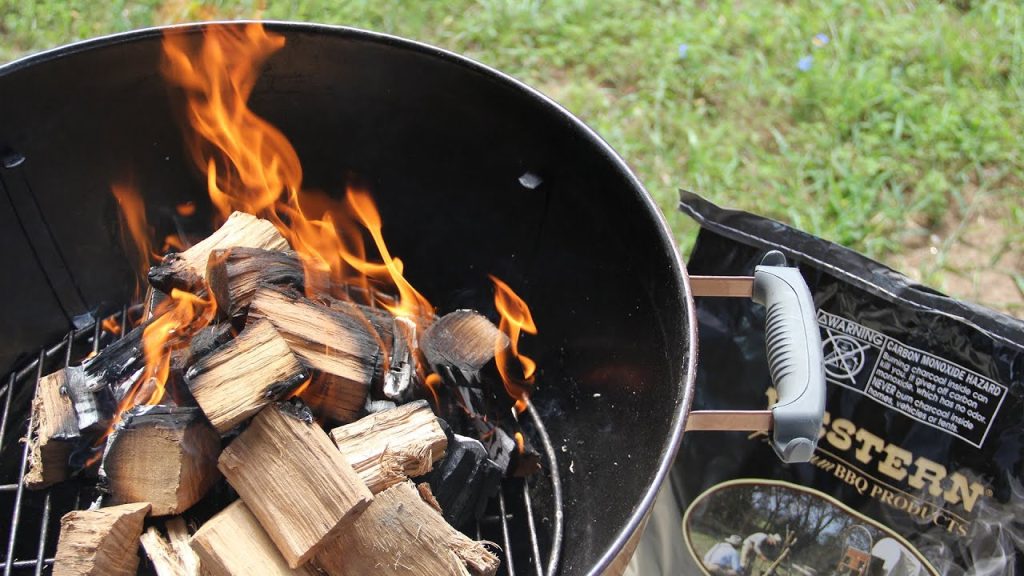
When shopping for charcoal, you’ll also come across wood bits (often labeled by type of wood: hickory, mesquite, etc.).
These haven’t been transformed into charcoal and are probably better for smoking than grilling meats. You’ll need to make a fire or use lighter fluid to use it for grilling. Wood chunks will also burn more quickly than charcoal. However, because the wood is still intact, you’ll receive a richer smoke flavor. However, charcoal, (both natural wood and briquette) burns hotter, cleaner, and more evenly than plain wood chunks, which is why it’s so popular among grillers.
Stick to hardwoods if you’re planning to fire regular wood in your BBQ.
Many softer kinds of wood, such as pine, have a resin that releases when cooked and gives your dish an unpleasant taste. Fruit tree wood, such as cherry, imparts a subtle sweetness (great for lamb or pork).
For a rich, deep flavor, pecan or walnut is ideal. However, the most frequent cooking woods are mesquite, hickory, and oak. They, too, have a fantastic flavor.
The disadvantage of cooking solely with wood is that you only want a hint of smokiness. If you use too much smoke, the flavor of the smoke will overshadow everything else. That’s why seasoned smokers like Aaron Franklin frequently advise smoking for four hours before continuing to cook on low heat.
As a result, you might discover that adding some wood chunks or chips to your charcoal is the ideal option.
What exactly is Binchotan?
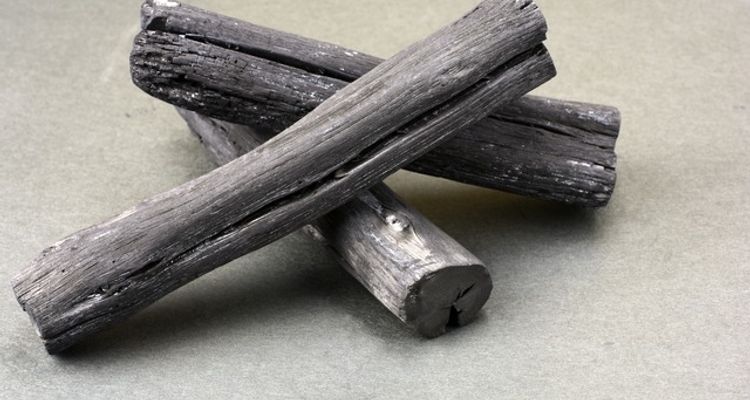
Binchotan, also known as bincho-zumi or binchozumi, is a form of charcoal used in Japan for centuries. White charcoal is another name for it. Binchotan is a sort of lump charcoal or hardwood charcoal made from oak trees, not a manufactured briquette.
Many grillers prefer it over typical black charcoal because it creates virtually no flame or smoke while providing amazingly constant high heat. It has a maximum temperature of 2,200° and can burn for hours. If you plan to utilize binchotan, the easiest way to keep the heat contained is to dig a pit in the earth.
Using coconut charcoal to grill
Since coconut is in everything these days (oil, coffee creamer, water, etc.), it might as well join the barbeque party.
BBQ briquettes manufactured from compressed coconut shells are known as coconut charcoal. Many products claim to be GMO-free and organic. However, most lump hardwood charcoal trees are unlikely to be genetically modified (but could be sprayed with pesticides).
The main benefits come from the fact that it burns up to three times longer and is hotter than regular charcoal. As a result, coconut charcoal manufacturers advocate using a lot less charcoal when grilling than you would with other varieties of charcoal. They also strike a good balance between too little and too much smoke.
Some of the more well-known brands include Cocourth, Coco Ala, Green Eco, and Coshell. Still, as they grow in popularity, you can expect to see the more prominent brands appear (Cowboy, which is really Duraflame, or Kingsford, get in on the action).
Is it healthier to cook with wood rather than charcoal?
Unfortunately, grilling has several drawbacks, and utilizing a propane grill is usually preferable from a health aspect.
Smoke is produced when extra fat from the meat you’re grilling drips onto the hot coals below.
Polycyclic aromatic hydrocarbons (PAHs) are a type of chemical found in smoke (PAHs). In addition, a substance known as heterocyclic amines blackens the outside of the flesh (HCAs).
Both PAHs and HCAs have been linked to cancer.
According to the study, the National Institutes of Health discovered that “weekly consumption of… 1 or more servings of grilled red meat” was “associated with an approximately 50% increased risk of developing advanced prostate cancer,” according to the study. However, they do point out that the risk is the same for well-done red meat and processed meat in general.
Is it true that charcoal burns longer than wood?
Because they are manufactured from sawdust and other additives, charcoal briquettes burn more quickly than wood. As a result, while cooking with briquettes, you usually need to add more briquettes more regularly than when cooking with wood.
Charcoal or wood, which is hotter?
Well, the charcoal burns much hotter than regular wood. Charcoal briquettes, in fact, generally burn nearly twice as hot as regular wood. However, lump hardwood charcoal burns hotter than charcoal briquettes. Briquettes burn between 700 and 800 degrees, whereas lump hardwood charcoal burns around 1000 degrees.
What about using wood pellets as a grilling fuel?
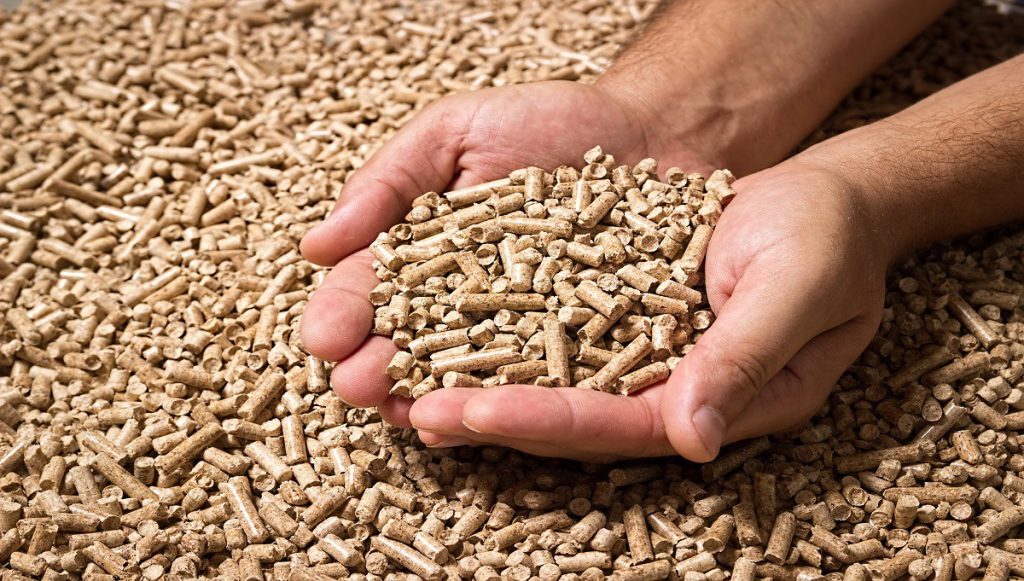
Pellets have been popular for grilling and smoking in recent years. They provide the best of both worlds, combining the ease of turn-the-knob propane grills with the authentic wood smoke and flavor of natural wood.
Pellets, like briquettes, usually are created from sawdust. However, they are often made from recovered hardwood, making them more environmentally friendly than traditional briquettes.
They usually don’t contain any of the additives found in charcoal briquettes. On the other hand, Pellets do not work in just any grill, so you’ll need to invest in a pellet grill or smoker if you want to use them for your barbecue.
You can usually set particular temperatures in 5-degree increments with these pellet grills. They plug into a wall outlet for power, then heat the pellets.
They cook evenly and preheat quickly, in as little as 15 minutes.
Pellets come in a variety of flavors, including:
- Hickory
- Pecan
- Apple
- Alder
- Cherry
- Mesquite
- Maple
In only a few minutes, you can mix and match the tastes of your pellets.
Using 1/2 pound of pellets per hour as a smoker or 2-1/2 pounds per hour as a grill, a 20-pound bag will last several dinners.
How does propane compare to wood or charcoal grilling?
This is where the dispute becomes most heated. Make no mistake: BBQers have much controversy about using lump hardwood, pellets, or briquettes. The genuine dispute, however, is frequently between gas and everything else.
What are the advantages of propane?
It immediately heats up. Setting and maintaining a given temperature is simple. For a quick lunch, toss a few things on the grill.
The disadvantage is that most propane grills do not heat up as quickly as wood or charcoal briquettes. Compared to wood charcoal, which can reach temperatures of over 1000°, and briquettes, which can reach temperatures of around 700-800°, most propane grills reach around 600°.
They don’t even have a hint of smoke flavor.
You can also start a fire using charcoal or wood and then spread the briquettes or chunks around to create a large area where the food will receive direct heat. The heat from propane grills is mainly concentrated over the burners.
Personally, I enjoy using a three-stage grill. There’s a propane section, a charcoal chamber, and a smoker attachment on the side of the charcoal grill. That provides me with all of the flexibility I require, depending on what I’m cooking and how much time I have.
11 Key Differences between Charcoal and Wood
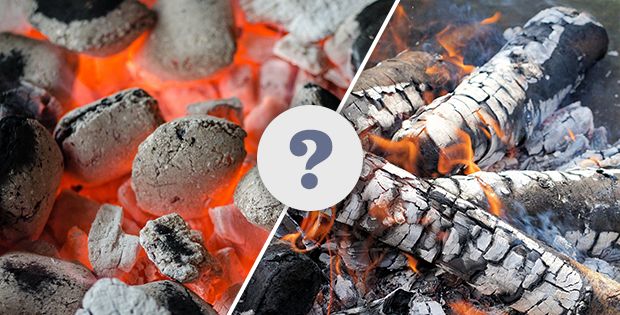
- Sawdust and additives such as borax, limestone, or cornstarch are used to make charcoal briquettes.
- Charcoal briquettes burn hotter than hardwood charcoal lumps.
- Lump hardwood burns for longer than briquettes of charcoal.
- Charcoal briquettes produce far more ash than wood, necessitating more frequent cleanups.
- Japanese binch-tan (white charcoal) burns hotter than any other type of charcoal, reaching temperatures of up to 2000°F.
- Charcoal briquettes burn more evenly and consistently than wood.
- Charcoal briquettes are commonly produced with chemical additions such as sodium nitrate.
- However, some lump hardwood charcoal is created from lumber waste that may have been treated or may contain glue or nails.
- In collaboration with Thomas Edison and EB Kingsford, Henry Ford popularized what is now known as charcoal briquettes.
- Briquette and lump hardwood charcoal are both manufactured by heating wood in the absence of oxygen, which converts the wood to carbon.
- Using only plain wood to cook imparts an excessive amount of smoke taste to the food. Many grill masters choose to add wood chunks or chips to lump hardwood charcoal or charcoal briquettes to balance heat and smoke.
Summary
So, to summarize the distinctions between wood and charcoal…
When barbecuing on your barbecue, employing charcoal (either briquettes or lump wood charcoal) has several distinct advantages.
Charcoal reaches a high temperature quickly and burns for a long time.
As charcoal heats up, steam is released because it is compressed.
Then, when the meat begins to burn, and the fat renders and drops over the charcoal, steam (and maybe carcinogens, as I mentioned earlier) is produced, flavoring the food. In general, the char on the outside of your meat is superior to cooking with wood or propane.
However, charcoal produces a lot more ash, necessitating more frequent grill cleaning.
You also have hot embers that have been burning for a long time, causing cleanup to be delayed or even dangerous.
Grilling with wood or charcoal is much more challenging to control the temperature than grilling with gas.











